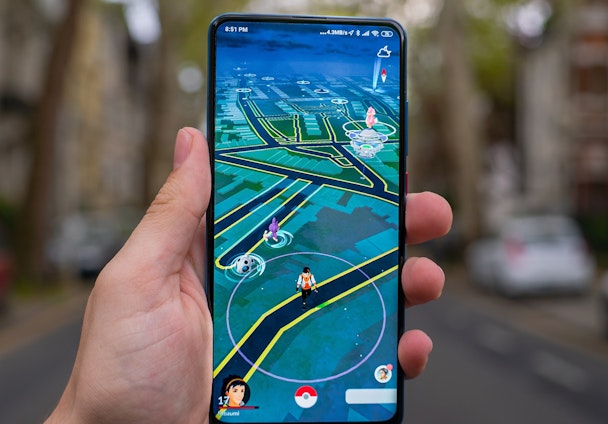Augmented reality: fad or future?
Since the advent of social media platforms in the early 2000s, we've seen a consumption shift away from ‘connectivity’ toward ecosystems of creation and discovery. Rather than adding only school friends from 20 years ago on Facebook, one billion people now use TikTok per month to create their own content in the form of long and short-form videos. One emerging technology embracing this ‘entertainment’ shift is augmented reality (“AR”). Isabelle Cavanagh, consultant at Capgemini, looks at the evolutionary power of AR.

Capgemini consider the prowess of augmented reality.
AR is the enhancement of real-life by digital means. Think back to the summer of 2016 when people around the world were exploring real-life streets in search of virtual Pokémon. Technological advancements have allowed users to combine reality and fantasy in the endless mobile ecosystem. AR is already accessible across social platforms, after Snapchat’s pioneering AR ‘lenses’ launch in 2015 cascaded to Facebook, Instagram, Pinterest and TikTok.
Despite the bright start for AR, brands can’t shy away from the unforgiving trend culture that exists in our digital world. Brands, products and even people can have their fleeting moment of popularity before quickly falling back into obscurity.
So, should brands invest time, resource and budget to incorporate AR into their social media marketing strategy, or is AR another example of “inflated expectations” – a short-lived demand before its inevitable demise?
Why brands should invest in AR for their social strategy
AR provides an opportunity to bring customer experience to the next level. For AR to be a successful, results-driving, social strategy, brands must use it to drive brand engagement or solve real-life problems facing consumers. Consider Google Glass: Google failed to solve any real-life problems with the product, instead generating privacy concerns, bamboozling customers (people had to learn a completely new piece of tech) and introducing a product with a hefty price tag.
Google missed the mark here, and questions arose whether this signaled the fall of AR. But since 2014, AR has undeniably, positively infiltrated the social media marketing sphere, with its tech now integrated into the foundations of social platforms. Here are three ways brands could effectively leverage AR in their 2022 social strategy:
1. Drive brand awareness with branded filters
With the expansion of Facebook’s Spark AR Studio, brands can now create free AR Filters on Facebook and Instagram. One example is a YouTube trend that scored millions of views formed solely from content creators using the popular ‘What Starbucks Drink Am I?’ filter on Instagram to decide which drink they ordered. Thousands of user-generated videos were made and posted across multiple channels, making this a new age brand awareness engine. These free filters only take seven days to create, review and launch. Brands won’t need technical hires for creation (unless of course you want them encoded), saving further budget and resource.
2. Make it immersive to capture attention
Filters are an easy way for brands to promote themselves without consumers feeling like they are being marketed to. Research shows that people who use AR filters use them for an average of 75 seconds – four times longer than mobile video with 70% higher recall. That’s 75 whole seconds for brands to drive engagement and top-of-mind awareness.
To capture the attention of Gen Z, Pull & Bear expanded into the gaming market using AR. They launched a ‘Pacific Game’, which involves a virtual trip from California to Tokyo during which users move their heads to dodge obstacles and collect points. Users can play on Instagram and Facebook and as Tim Cooper, director of brand game maker Peek & Poke, highlights, AR allows brands to ‘add that extra piece of magic’ to a branded campaign.
3. Let people try before they buy
Maintaining its position as the current leader of the social AR tech race, Snapchat expanded its commerce capabilities in 2020 to allow users to ‘Try Before You Buy’ in a collaboration with Gucci. Gucci saw a gap in the market: there are more consumers online than ever before, yet according to PwC’s annual consumer survey, 61% of consumers refrain from ecommerce due to not being able to try an item on.
With this lens, consumers were able to ‘try on’ Gucci trainers in real time, before going straight to Gucci’s website to purchase the product online, generating positive ROAS as a result. This is where the crossover between real life and AR scores particularly highly: Gucci were able to reach consumers who couldn’t visit stores due to the pandemic, in turn driving sales.
AR is more than just a transient novelty. Within the accelerated digitization of our lives, brands must innovate their digital strategy to keep users engaged. Key to future-proofing the success of AR will be mainstream adoption, but this is already well underway. Whether you want to utilize free filters from Facebook, or launch your own game, AR is a must for brands’ 2022 social strategy.
For more information on Capgemini Invent & frog, visit our site and get in touch.
Content by The Drum Network member:

frog
frog is a leading global creative consultancy, part of Capgemini Invent. Partnering with passionate leaders and visionary entrepreneurs, we apply creativity, strategy,...
Find out more
